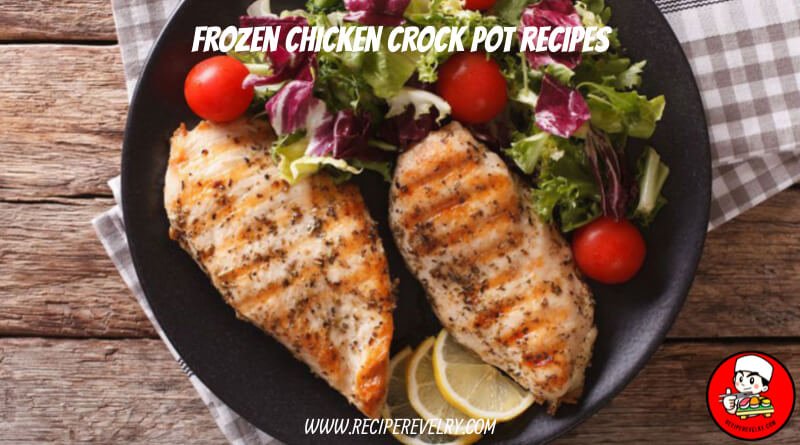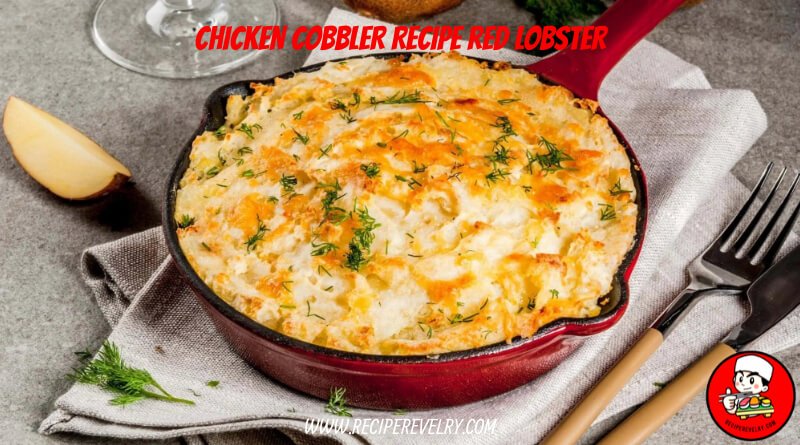Ah, frozen chicken crock pot recipes—a true lifesaver in the kitchen! If you’re anything like me, you appreciate the convenience and flavor-packed goodness of crock pot cooking. Picture this: perfectly tender chicken infused with aromatic herbs and spices, all effortlessly prepared in your trusty crock pot. But before we dive into the delicious details, let’s talk about why this method is a game-changer. From its time-saving prowess to the mouthwatering results, cooking frozen chicken in a crock pot provides unmatched convenience. However, let’s not forget the golden rule: proper preparation and safety measures are critical to culinary success. So, buckle up, fellow foodies, as we embark on a flavorful journey of frozen chicken crock pot mastery!

Ingredients
- Frozen chicken (breasts, thighs, or a combination)
- Fresh or frozen vegetables (such as carrots, celery, onions, bell peppers)
- Garlic cloves, minced
- Olive oil or cooking spray
- Chicken broth or stock
- Herbs and spices (like thyme, rosemary, paprika, salt, and pepper)
- Worcestershire sauce or soy sauce (for added flavour)
- Optional extras: diced tomatoes, tomato sauce, diced potatoes, rice, pasta
Thawing Frozen Chicken Safely
Thawing frozen chicken properly is crucial to ensure safe and delicious meals.
Recommended Methods for Thawing Chicken
1. Refrigerator Thawing: To thaw frozen chicken, place it on a plate or in a container to catch drips and allow ample time for complete thawing. Typically, this process takes overnight or up to 24 hours, depending on the size and thickness of the chicken pieces.
2. Coldwater Thawing: If you’re short on time, submerge the sealed chicken package in cold water. Change the water every 30 minutes to ensure it stays cold. The duration typically ranges from 1 to 3 hours, varying according to the size of the chicken.
3. Microwave Thawing (if needed): If you need to thaw chicken quickly, use the microwave’s defrost setting. Follow the microwave’s instructions and rotate the chicken frequently to ensure even thawing.
Importance of Food Safety During Thawing Process
Thawing chicken properly is essential to prevent bacterial growth and foodborne illnesses. Thawing chicken in the refrigerator is the safest method, ensuring a consistent temperature. Coldwater thawing and microwave methods are quicker but need close monitoring to maintain safe temperatures. Always cook thawed chicken promptly to minimize contamination risks.
Seasoning and Marinating
Seasoning and marinating frozen chicken can take your crock pot dish to the next level of flavour.
Creating a Flavorful Seasoning Mix
Get creative with your seasoning by mixing various herbs and spices to craft a personalized blend. Common choices encompass salt, pepper, garlic powder, onion powder, paprika, thyme, rosemary, and oregano. Tailor the amounts to suit your taste preferences and achieve the desired flavour profile for your meal.
Tips for Marinating Frozen Chicken to Enhance Taste
If you have time, consider marinating your frozen chicken before cooking to infuse it with extra flavour. Choose a marinade that complements the other ingredients in your dish, such as lemon juice, soy sauce, vinegar, or your favourite salad dressing. Place the frozen chicken and marinade in a sealed container or resealable bag and let it marinate in the refrigerator for at least a few hours or overnight for maximum flavour.
Balancing Flavors with Herbs and Spices
Aim for a balanced combination of herbs and spices when seasoning your frozen chicken. Consider the overall flavour profile you’re aiming for and adjust the seasoning accordingly. For example, if you’re going for a bold and spicy dish, you might use more cayenne pepper or chilli powder. If you prefer a milder flavour, stick to herbs like parsley and basil. Feel free to taste and adjust the seasoning to suit your taste preferences.
Layering Ingredients in the Crock Pot
Mastering the art of layering ingredients in your crock pot ensures a perfectly cooked and flavorful dish.
Proper Layering for Even Cooking
Start by placing dense ingredients like root vegetables or thick cuts of frozen chicken at the bottom of the crock pot. This allows them to cook evenly and thoroughly. Layer lighter ingredients, such as leafy greens or smaller chicken pieces, to prevent them from becoming mushy.
Placing Vegetables and Chicken Strategically
Arrange vegetables and chicken strategically to ensure even cooking and optimal flavour infusion. For example, place vegetables around the sides of the crock pot and chicken in the centre to allow for better heat circulation. This prevents overcrowding and helps ingredients cook more evenly.
Ensuring Sufficient Liquid for Moisture and Tenderness
Liquid is essential for creating a moist and tender dish in the crock pot. Add enough broth, sauce, or water to cover the bottom of the crock pot and reach about halfway up the sides of the ingredients. This ensures that the chicken stays juicy and tender during the cooking process. Adjust the amount of liquid based on the recipe and personal preference, but always ensure enough to prevent the dish from drying out.
Crock Pot Cooking Settings
Understanding the different settings of your crock pot is essential for successful cooking outcomes.
Understanding Low, High, and Warm Settings
Most crock pots have three primary settings: low, high, and warm. The low setting cooks food at a lower temperature over a more extended period, ideal for tenderizing tough cuts of meat and simmering stews. The high setting cooks food more quickly at a higher temperature, suitable for when you’re short on time. The warm setting keeps food at a safe serving temperature once it’s finished cooking, perfect for buffet-style gatherings.
Recommended Cooking Times for Frozen Chicken
When cooking frozen chicken in the crock pot, following recommended cooking times is essential to ensure it reaches a safe internal temperature. Generally, frozen chicken will take longer to cook than fresh chicken. Firm chicken breasts may take 6-8 hours to cook on low heat, while on high heat, they may cook in 3-4 hours. Thighs and other cuts may vary in cooking times, so checking for doneness with a meat thermometer is essential.
Adjusting Settings Based on Recipe and Preferences
Adjusting the crock pot settings based on your recipe and preferences is critical to achieving the desired results. If you prefer a more hands-off approach and have ample time, opt for the low setting for tender and flavorful results. The high setting is your go-to option if you’re in a hurry or need dinner ready sooner. Additionally, some recipes may call for a combination of both settings, such as starting on high to quickly bring the dish to temperature and then switching to low for a longer, slow cook. Adjust settings as needed to suit your cooking needs and schedule.
Monitoring and Testing
Keeping an eye on your dish as it cooks ensures that your frozen chicken crock pot meal turns out perfectly every time.
Checking Chicken Temperature for Doneness
To ensure safety:
- Use a meat thermometer to gauge the chicken’s internal temperature, aiming for a minimum of 165°F (75°C).
- Insert the thermometer into the thickest part of the chicken for precise readings.
- If the temperature doesn’t meet the safe threshold, continue cooking until it reaches the recommended level.
Adjusting Cooking Time if Needed
Adjust the cooking time if your chicken still needs to be cooked through or is still slightly frozen in the center. Add additional cooking time in 30-minute increments and check the temperature until the chicken is fully cooked. It’s better to be safe than sorry regarding food safety.
Tips for Preventing Overcooking or Undercooking
Avoid leaving the chicken in the crock pot in a warm setting for too long after cooking to prevent overcooking. Overcooked chicken can become dry and tough. Conversely, to prevent undercooking, ensure that the crock pot is set to the appropriate temperature and cooking time according to your recipe. Additionally, consider using a timer or setting a reminder to check the chicken periodically during cooking to avoid mishaps.
Serving Suggestions
Completing your frozen chicken crock pot masterpiece with the perfect accompaniments elevates the dining experience.
Pairing with Side Dishes (e.g., Rice, Potatoes)
Serve your flavorful crock pot chicken alongside various side dishes to create a well-rounded meal. Popular options include fluffy white rice, creamy mashed potatoes, or a hearty quinoa side dish that can complement the flavours of the chicken and provide additional textures and nutrients to the meal.
Garnishing with Fresh Herbs for Presentation
Add a touch of freshness and visual appeal to your dish by garnishing it with fresh herbs. Sprinkle chopped parsley, cilantro, or chives over the chicken just before serving to enhance its presentation and flavour. Fresh herbs not only elevate the aesthetics of the dish but also provide a fragrant finishing touch.
Creating a Balanced and Appealing Meal
Aim for balance in flavours, textures, and colours when serving your frozen chicken crock pot creation. Include a variety of vegetables in your dish to add vibrancy and nutritional value. Consider incorporating different cooking techniques, such as roasting or steaming, to create diverse textures. Arrange the meal’s components thoughtfully on the plate to create an appealing visual presentation. By paying attention to these details, you’ll ensure that your meal is not only delicious but also visually stunning and satisfying.
Tips for Leftovers
Maximize the deliciousness of your frozen chicken crock pot meal by making the most of your leftovers.
Proper Storage of Leftover Crock Pot Chicken
Store your leftover crock pot chicken fresh and safe to eat:
- Storertight container or resealable bag. Refrigerate
- the leftovers within two hours of cooking to prevent bacterial growth. Label the container with the date for easy tracking and store it in the refrigerator for 3-4 days. This simple storage method ensures that your leftover chicken remains delicious and ready to enjoy for several days.
Reheating Techniques for Maintaining Flavor and Texture
When reheating leftover crock pot chicken, use gentle methods to preserve its flavour and texture. Please avoid using the microwave, as it can dry out the chicken. Instead, reheat the chicken slowly on the stovetop over low heat or in the oven at a low temperature. Add a splash of chicken broth or water to prevent the chicken from becoming dry, and stir occasionally until heated through.
Creative Ways to Repurpose Leftovers into New Meals
Get creative with your leftover crock pot chicken by repurposing it into new and exciting dishes. Shred the chicken as a filling for tacos, enchiladas, or sandwiches. Toss it into salads or soups for added protein and flavour. Alternatively, chop the chicken and incorporate it into casseroles, stir-fries, or pasta dishes for a quick and easy meal. The possibilities for transforming leftover crock pot chicken into delicious new creations are endless.
FAQ
Can I put frozen chicken directly into the crock pot?
You can put frozen chicken directly into the crock pot for cooking. Still, it’s essential to ensure it reaches a safe internal temperature.
How long does it take to cook frozen chicken in a crock pot?
The cooking duration for frozen chicken in a crock pot typically varies, generally from 4 to 8 hours on low heat or 2 to 4 hours on high heat.
Do I need to thaw frozen chicken before putting it in the crock pot?
While it’s not required, thawing frozen chicken before putting it in the crock pot can help ensure more even cooking and better results.
Can I add vegetables directly to the crock pot with frozen chicken?
Yes, you can add vegetables directly to the crock pot with frozen chicken for a complete meal, but ensure they are cut to appropriate sizes for even cooking.
How can I prevent my frozen chicken crock pot recipe from becoming dry?
To prevent dryness, ensure enough liquid is in the crock pot, and avoid overcooking the chicken.
Conclusion
Mastering frozen chicken crock pot recipes opens up a world of convenience and culinary delight. From understanding proper thawing techniques to experimenting with flavorful seasonings and strategic layering, every step contributes to a delicious result. You can ensure perfectly cooked chicken every time by monitoring cooking settings and checking for doneness. Moreover, maximizing leftovers and sharing recipes with a community of fellow enthusiasts adds a sense of camaraderie and inspiration to the cooking journey. With these tips and tricks, anyone can create mouthwatering meals that are both satisfying and comforting, all with the help of a trusty crock pot.
Additional Ideas and Call to Action
Explore more possibilities and connect with fellow food enthusiasts to expand your frozen chicken crock pot cooking repertoire.
Experimenting with Different Flavors and Ingredients
Don’t be afraid to get creative and experiment with various flavours and ingredients in your frozen chicken crock pot recipes. Try different herbs, spices, sauces, and marinades to customize the flavours to your liking. Mix and match ingredients to discover unique flavour combinations that tantalize your taste buds and keep your meals exciting.
Encouraging Sharing of Personal Frozen Chicken Crock Pot Recipes
Share your frozen chicken crock pot recipes with friends, family, and cooking enthusiasts. Whether it’s a family favourite or a new creation you’ve developed, encourage others to try your recipes and provide feedback. Exchange recipes with others and inspire each other to try new flavour combinations and cooking techniques. Sharing recipes fosters a sense of community and encourages collaboration in the kitchen.
Inviting Readers to Join a Community or Share Their Experiences on Social Media
Join online cooking communities or social media groups dedicated to crock pot cooking and share your experiences with frozen chicken crock pot recipes. Engage with others by sharing photos of your delicious creations, asking for advice, and learning from the experiences of fellow cooks. Connect with like-minded individuals who share your passion for cooking and exchange tips, tricks, and recipe ideas. Together, we can elevate our culinary skills and create mouthwatering meals to enjoy and share with others.


